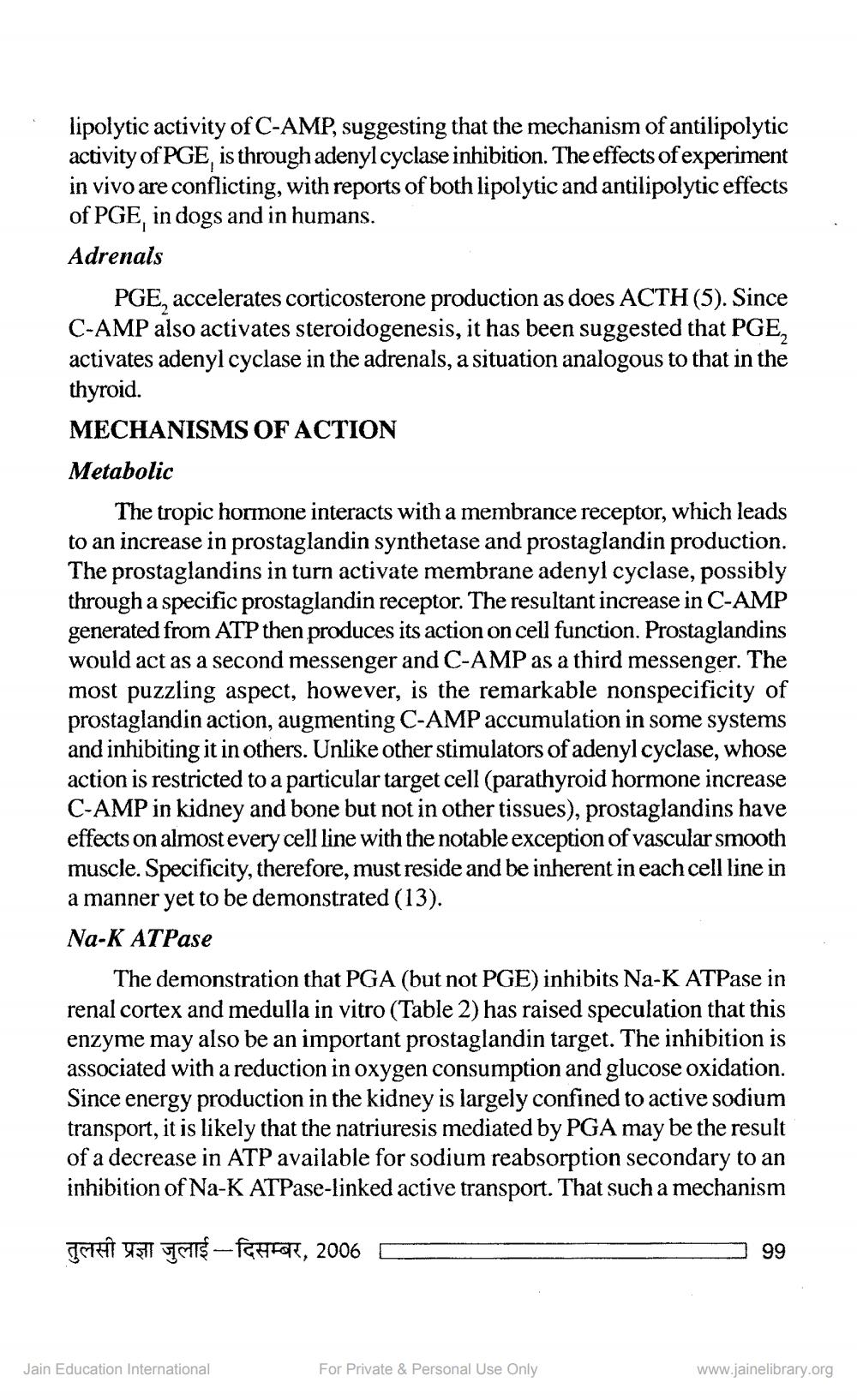________________
lipolytic activity of C-AMP, suggesting that the mechanism of antilipolytic activity of PGE, is through adenyl cyclase inhibition. The effects of experiment in vivo are conflicting, with reports of both lipolytic and antilipolytic effects of PGE, in dogs and in humans. Adrenals
PGE, accelerates corticosterone production as does ACTH (5). Since C-AMP also activates steroidogenesis, it has been suggested that PGE, activates adenyl cyclase in the adrenals, a situation analogous to that in the thyroid.
MECHANISMS OF ACTION
Metabolic
The tropic hormone interacts with a membrance receptor, which leads to an increase in prostaglandin synthetase and prostaglandin production. The prostaglandins in turn activate membrane adenyl cyclase, possibly through a specific prostaglandin receptor. The resultant increase in C-AMP generated from ATP then produces its action on cell function. Prostaglandins would act as a second messenger and C-AMP as a third messenger. The most puzzling aspect, however, is the remarkable nonspecificity of prostaglandin action, augmenting C-AMP accumulation in some systems and inhibiting it in others. Unlike other stimulators of adenyl cyclase, whose action is restricted to a particular target cell (parathyroid hormone increase C-AMP in kidney and bone but not in other tissues), prostaglandins have effects on almost every cell line with the notable exception of vascular smooth muscle. Specificity, therefore, must reside and be inherent in each cell line in a manner yet to be demonstrated (13). Na-K ATPase
The demonstration that PGA (but not PGE) inhibits Na-K ATPase in renal cortex and medulla in vitro (Table 2) has raised speculation that this enzyme may also be an important prostaglandin target. The inhibition is associated with a reduction in oxygen consumption and glucose oxidation. Since energy production in the kidney is largely confined to active sodium transport, it is likely that the natriuresis mediated by PGA may be the result of a decrease in ATP available for sodium reabsorption secondary to an inhibition of Na-K ATPase-linked active transport. That such a mechanism
EST
U311 IMIS - GHEORE, 2006
C
99
Jain Education International
For Private & Personal Use Only
www.jainelibrary.org




